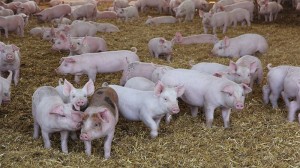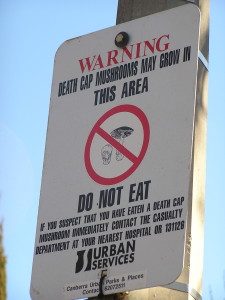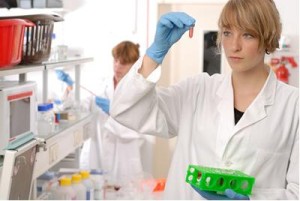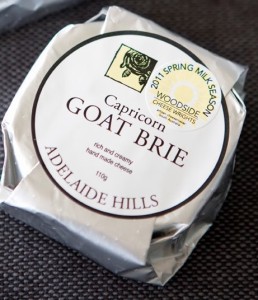After at least 30 people were sickened with Salmonella linked to Fuego’s Tortilla Grill in College Station, Texas, the restaurant has decided to start using pasteurized eggs.
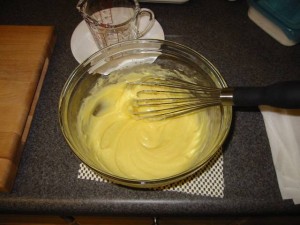 Since receiving the news that four of the 36 samples taken at the restaurant on May 13 tested positive for a strain of Salmonella, owner Paul Moler has reinforced safe food practices in the kitchen and imposed changes in food handling, which include the use of pasteurized eggs instead of the fresh, shelled eggs he believes to be the culprit.
Since receiving the news that four of the 36 samples taken at the restaurant on May 13 tested positive for a strain of Salmonella, owner Paul Moler has reinforced safe food practices in the kitchen and imposed changes in food handling, which include the use of pasteurized eggs instead of the fresh, shelled eggs he believes to be the culprit.
“You’re thinking you’re doing the best you can do and taking all the precautions and measures. When something like this happens, it’s pretty devastating,” Moler said.
“It’s devastating that we voluntarily closed the doors, and that was enough to face on its own, but that there were actually people out there that had gotten sick because of us — that is horrible,” he added.
The health department has yet to determine the specific source of the illness, but Texas Department of State Health officials will return to the local eatery to do a follow-up swab in two weeks, said Sara Mendez with the Brazos County Health Department. Local health officials inspected the restaurant before it reopened last weekend.
Compare that response to an outbreak in Canberra, Australia, in Dec. 2011, linked to raw egg mayonnaise served by the then popular Silo Bakery, which sickened at least 22 people.
In the aftermath of the outbreak, Silo co-owner Leanne Gray said officials have advised buying commercial mayonnaise or using pasteurized eggs. Her response: “That’s the foulest thing you’ve ever seen, so I said no, I won’t.”
The problem with raw eggs in food service is that they are pooled. Only 1-in-20,000 eggs may be Salmonella-positive, but when making large batches of mayonnaise or aioli, that may involve 100 eggs, that risk estimation changes to 1-in-200.
 In North America, I found pasteurized eggs available at most large supermarkets.
In North America, I found pasteurized eggs available at most large supermarkets.
But that may be changing, as the Washington Post reports difficulty in finding pasteurized whole eggs or pasteurized liquid egg whites at area supermarkets.
Pasteurization heats the egg to a high enough temperature to kill the bacteria, but does not cook it or significantly affect its color, flavor, nutritional value, or use. The times, temperatures, and methods used to pasteurize eggs and egg products vary. One method heats shell eggs to 57.5°C (135°F) for 25 minutes using a water bath (Hou et al, 1996). New research is investigating the use of radio frequency energy to pasteurize shell eggs. In Australia, standards for pasteurization of egg products are defined by Standard 1.6.2 in the Food Standards Code. The Food Standards Agency and the Canadian Food Inspection Agency define and regulate pasteurization requirements for the UK and Canada, respectively.
The yolk needs more heat than the white to kill bacteria, so specialized equipment is needed to reach a high enough temperature in the yolk without cooking the white. This special equipment is not available to consumers, so it is not recommended to pasteurize eggs at home.
Pasteurized whole out-of-shell eggs are not readily available in Europe or Canada for the general public, but are mostly sold in liquid form for wholesale and food service. The U.K. vaccinates hens to help prevent Salmonella contamination, and eggs from these hens are marked with the Lion mark.
In the U.S., shell eggs can also be pasteurized and are available to consumers. These are eggs that have been pasteurized without removing them from their shells. Although they are not available in all stores, pasteurized shell eggs are clearly labeled. One brand stamps a red “P” on the shell.
Pasteurized shell eggs are not currently available to the general public in the U.K., Canada, or Australia.
A table of raw egg related outbreaks in Australia is available at https://barfblog.com/wp-content/uploads/2014/03/raw-egg-related-outbreaks-australia-3-3-14.xlsx.
I wrote the Queensland Minister of Health to express my concerns a month ago, after 220 people were sickened and one died from Salmonella in raw egg dishes served at catered functions for the Melbourne Cup on Nov. 5, 2013.
No response.
 Riley Luke’s dinner from the Woonona restaurant looked normal at first but was strangely “soft” when he bit it.
Riley Luke’s dinner from the Woonona restaurant looked normal at first but was strangely “soft” when he bit it.


